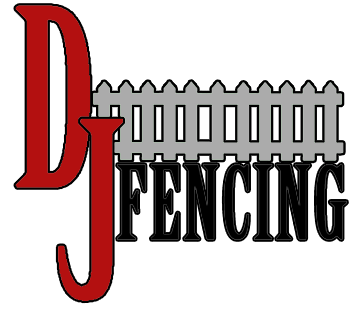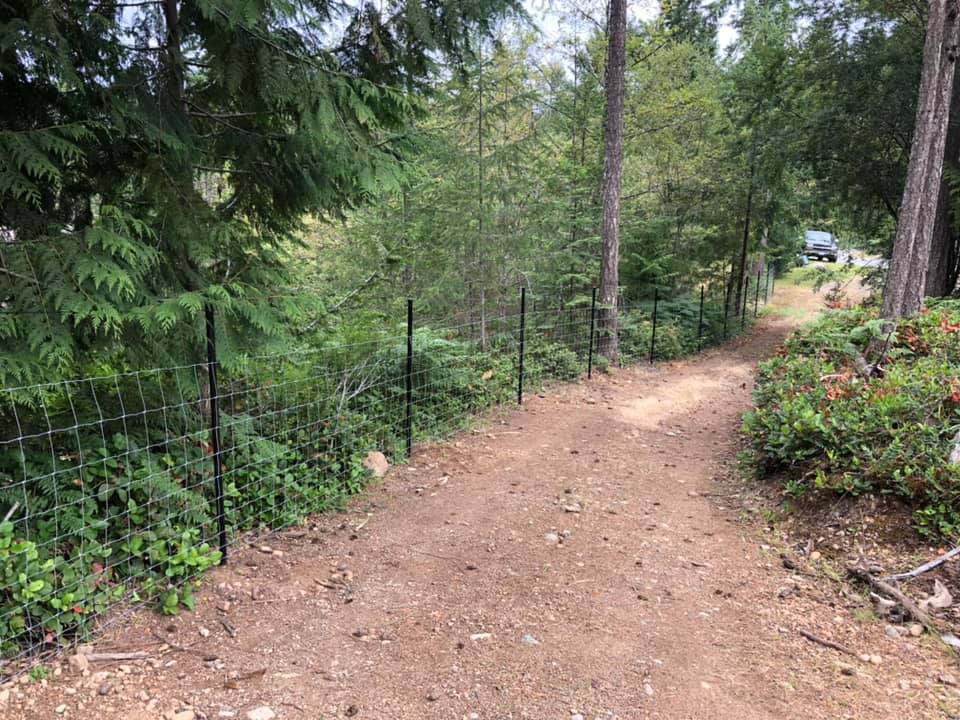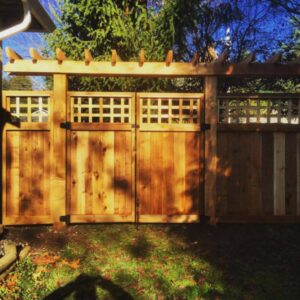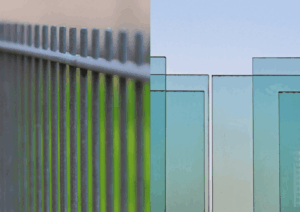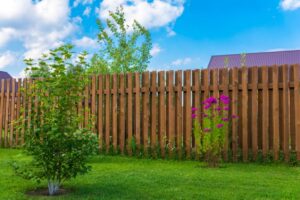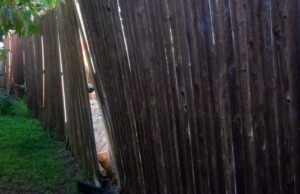Preparing your yard for fence installation is essential for a smooth process. Start by identifying your property lines to avoid disputes, then clear the area of debris and obstacles that could slow down the crew. Don’t forget to mark underground utilities and ensure there’s proper access for equipment. With a little planning, you can set the stage for a successful project. But what else should you think about before installation day?
Quick Summary
- Verify property lines with your deed or a surveyor to avoid boundary issues.
- Clear the area of debris, plants, and obstacles for easy installation.
- Mark underground utilities with flags or spray paint to prevent accidents.
- Check the weather forecast and have a backup plan for delays.
- Gather materials and tools suitable for expected conditions.
Assess Your Property Lines
Before starting your fence installation, it’s crucial to confirm your property lines to prevent disputes with neighbors or local authorities.
Consult your property deed or survey map, which clearly shows boundary lines. This step not only saves you from legal trouble but also helps you choose the right fence placement. If the boundaries aren’t clear, consider hiring a professional surveyor for an accurate reading.
Once your limits are established, you can confidently plan the fence layout, ensuring it meets regulations and enhances your yard.
Clear the Area
Start by clearing the space where your fence will be installed; a clean slate makes the process much smoother.
Remove debris like rocks, branches, or old garden items. This improves installation efficiency and boosts your yard’s appearance. Trim back overgrown plants and shrubs along the fence line so your new fence stands out nicely.
Marking the boundary with stakes or flags can also help you visualize the space before installation.
Remove Obstacles
Clear Debris and Clutter
Before installation begins, make sure the area is free of debris and clutter. Pick up fallen branches, rocks, or trash, and store away tools or garden equipment. This clears the work area for the crew and helps avoid delays.
Relocate Plants and Furniture
Next, move any plants or furniture that could block access. Dig up and replant any flowers or shrubs you’d like to save, placing them in pots temporarily. Relocate patio chairs, tables, or decorative items so the crew has plenty of space to work and your belongings stay safe.
Mark Underground Utilities
Marking underground utilities is a must before digging begins. Contact local providers for utility maps showing gas, water, and electric lines. Use bright spray paint or flags to mark these areas clearly.
Many utility companies offer free marking services, which is a smart way to ensure safety and avoid costly damage.
Consider Access for Installation
Think about how the crew and equipment will get into your yard. Clear pathways so they can easily bring in materials and tools. Move furniture, garden beds, or other obstacles that could block access.
If large machinery is needed, make sure there’s enough space for it to pass through. Planning ahead will save time and prevent damage to your landscape.
Check Local Regulations and Permits
Before installation, review local rules on fence height, placement, and materials. Each municipality has its own regulations, so contact your zoning office or check online.
Some areas may also require property surveys before issuing a permit. Taking care of this in advance avoids delays and fines later.
Communicate With Neighbors
It’s always a good idea to talk with your neighbors before putting up a fence. Share your plans and discuss the height, style, and placement.
This shows respect and consideration while preventing conflicts. Open communication can also build goodwill and avoid misunderstandings down the road.
Prepare for Weather Conditions
Check Local Weather Forecast
Always check the forecast leading up to installation day. Rain, wind, or extreme temperatures can delay the project. Use trusted weather apps and, if needed, adjust your schedule.
Plan for Rain Delays
Rain can cause setbacks, so be prepared. Have rain gear on hand, and discuss flexible scheduling with your contractor. Rescheduling may be the best option to ensure quality work.
Prepare for Extreme Temperatures
Hot or cold weather can affect both the crew and materials. Schedule work in cooler times of the day during heatwaves, and keep plenty of water available. In freezing conditions, consider postponing since materials like wood or concrete may not hold up properly.
Plan for Post-Installation Care
Installing your fence isn’t the final step—caring for it afterward is just as important.
Check for loose panels or rust, especially after storms. Keep the area around your fence clear of plants and debris to extend its life. Wooden fences may need a sealant each year to resist moisture and pests. Landscaping adjustments, like trimming shrubs or repositioning flower beds, can also highlight your fence and keep it looking great.
Frequently Asked Questions
How Long Does Fence Installation Typically Take?
Most fence installations take 1–3 days, depending on size and complexity.
What Type of Fence Is Best for My Yard?
Wood fences offer a classic look, while vinyl is durable and low-maintenance. Choose based on budget, style, and upkeep preferences.
Can I Install a Fence Myself?
Yes, DIY installation is possible with the right tools and planning. Just measure carefully and follow local regulations.
What Should I Do if I Find Underground Utilities?
Stop immediately and contact your utility company. They’ll guide you to ensure the project continues safely.
Will My Fence Affect My Property Taxes?
It might. Since fences can increase property value, they could raise your tax assessment.
Conclusion
By taking these steps, you’ll set yourself up for a smooth fence installation day. Confirming property lines, clearing the area, and planning for weather not only protect your investment but also help the crew work efficiently. Don’t forget to check permits, talk with neighbors, and plan for post-installation care. With the right preparation, you’ll soon enjoy a fence that improves privacy, security, and the beauty of your yard.
